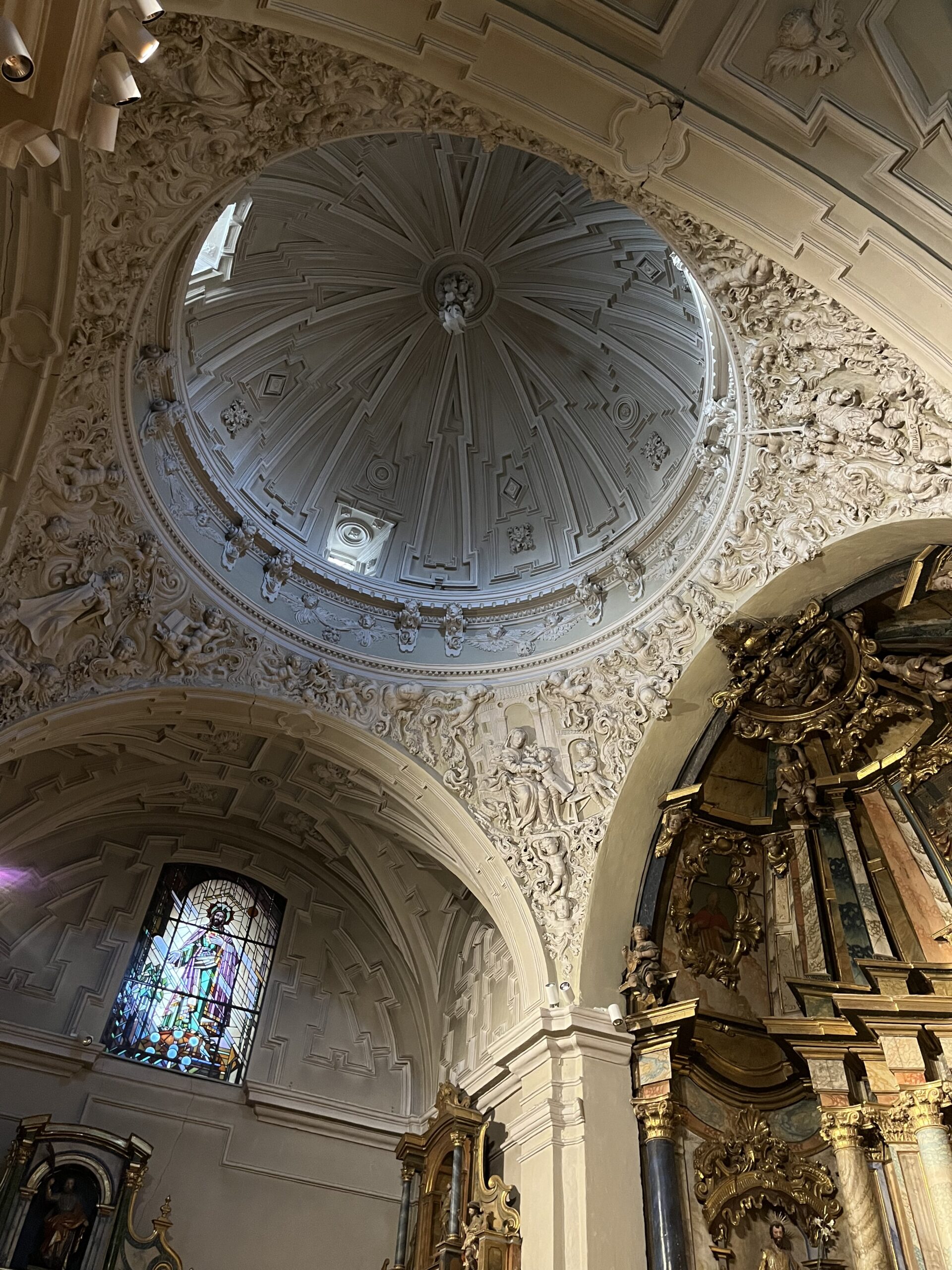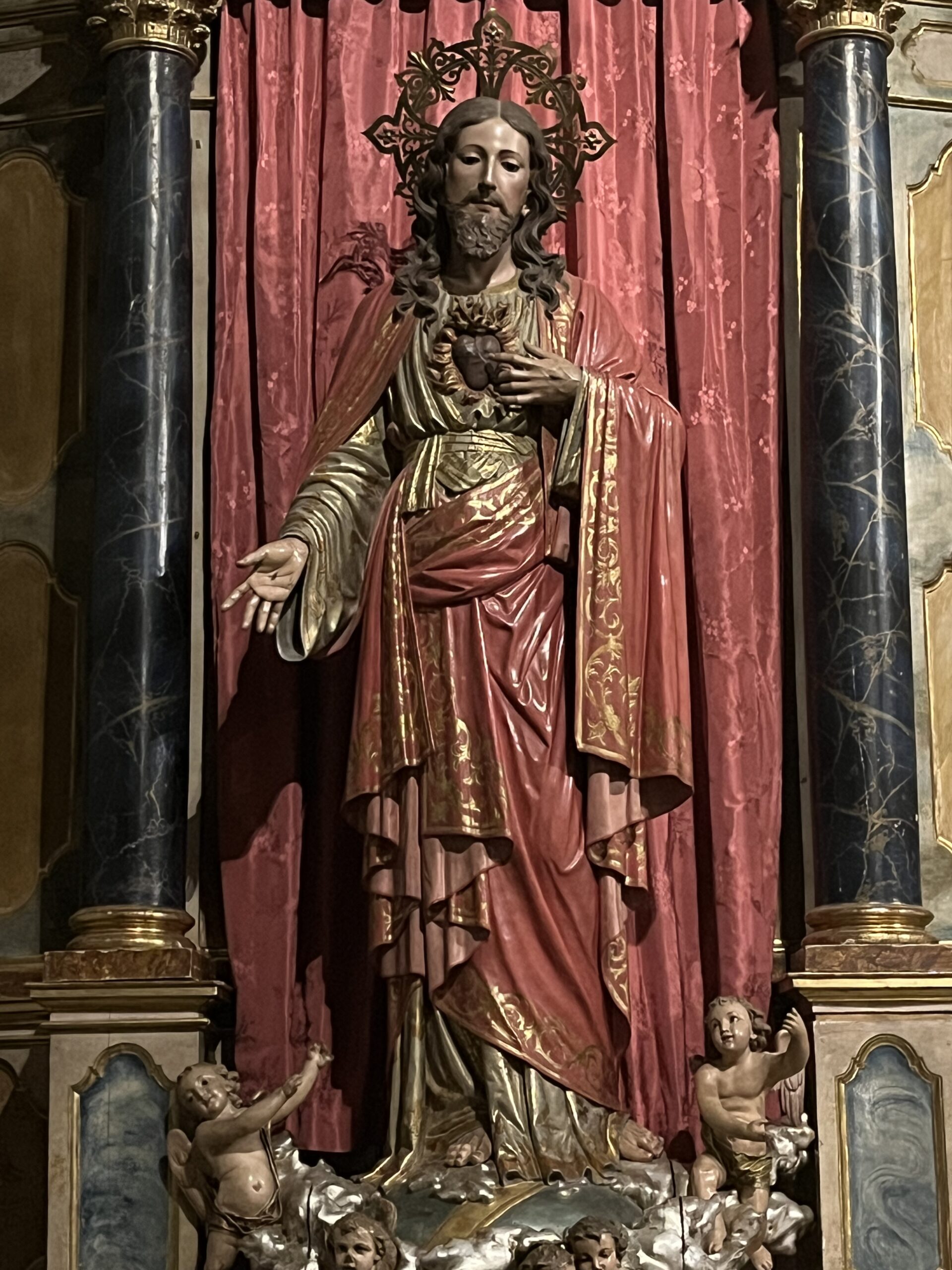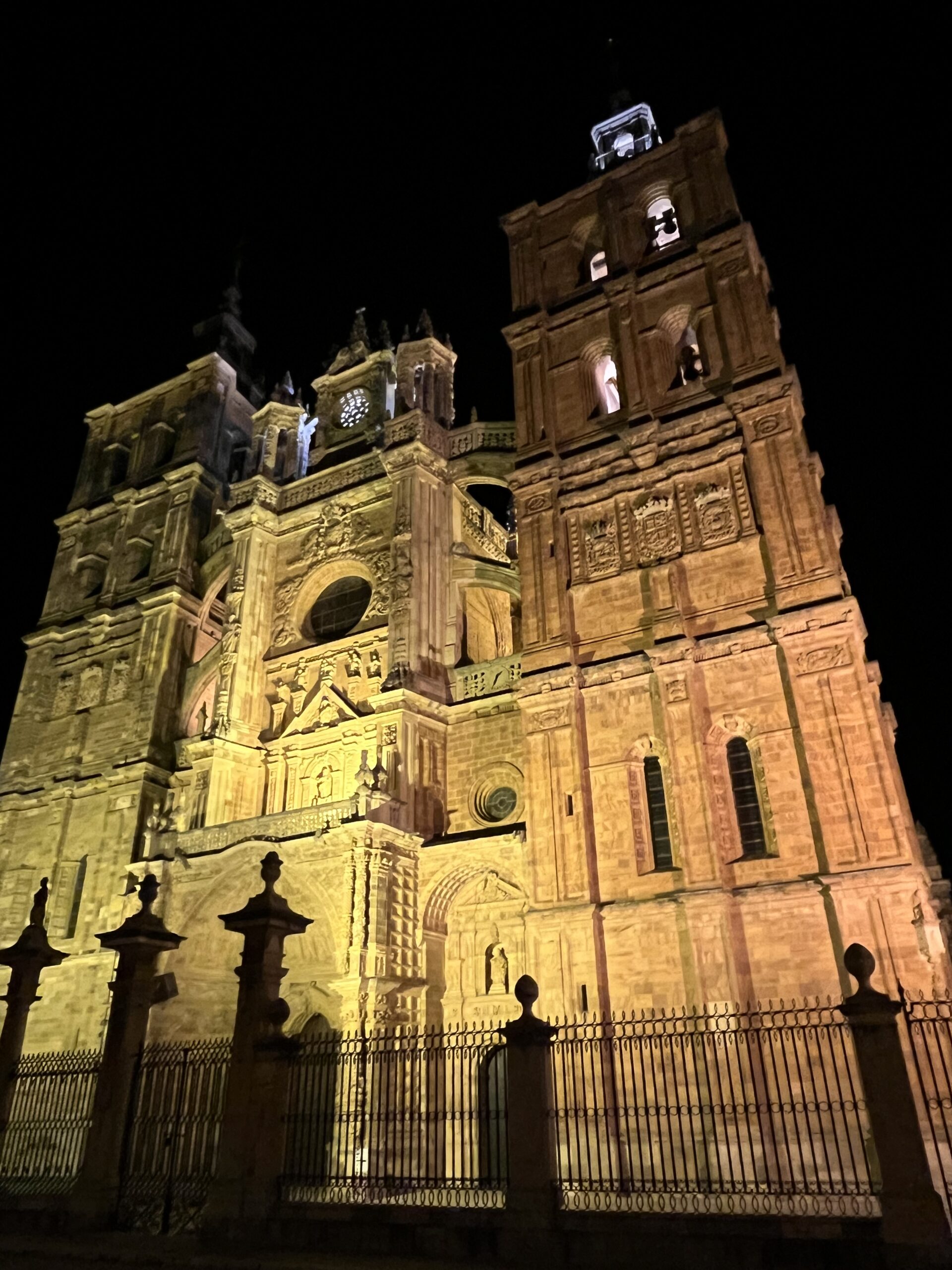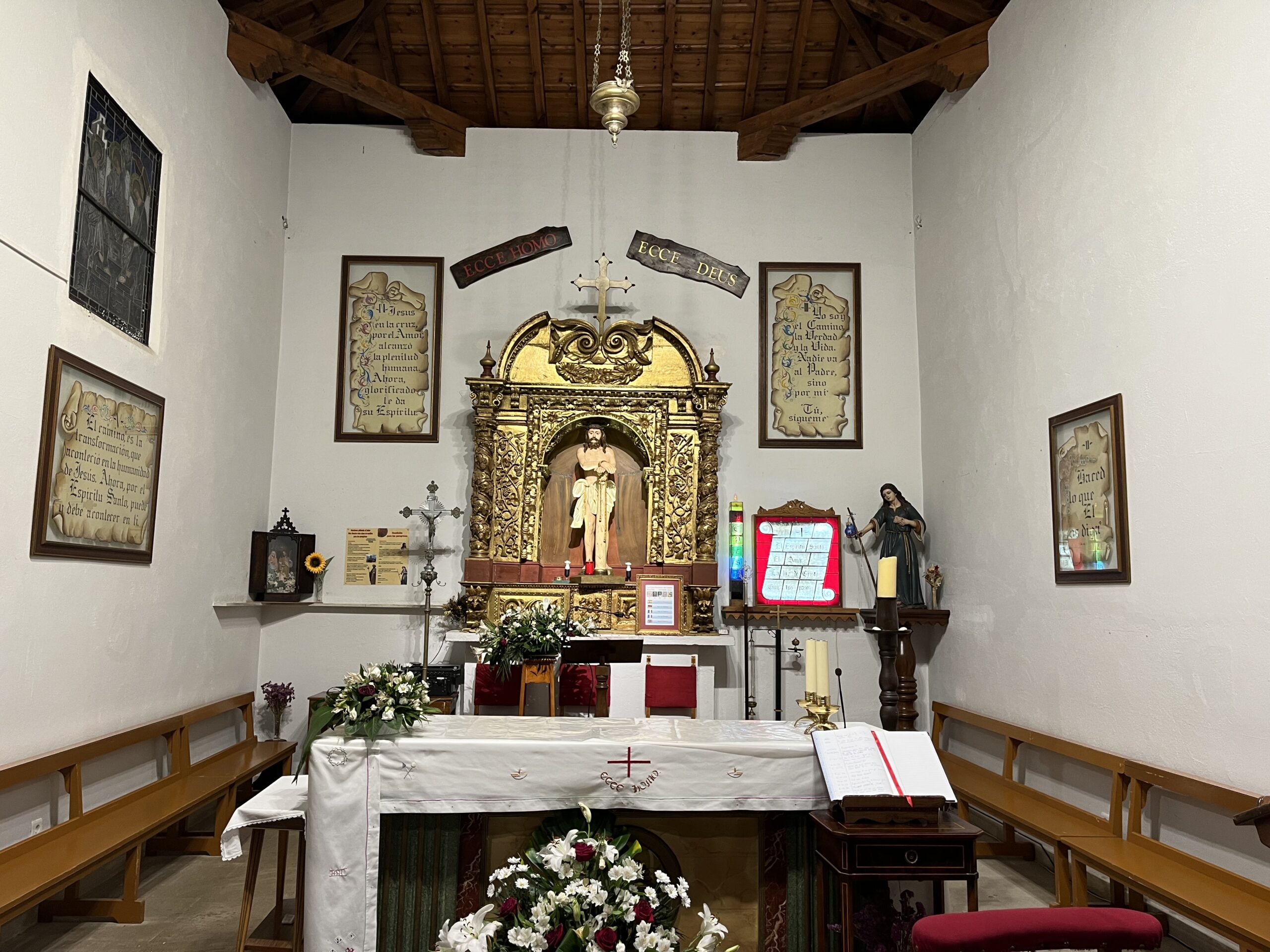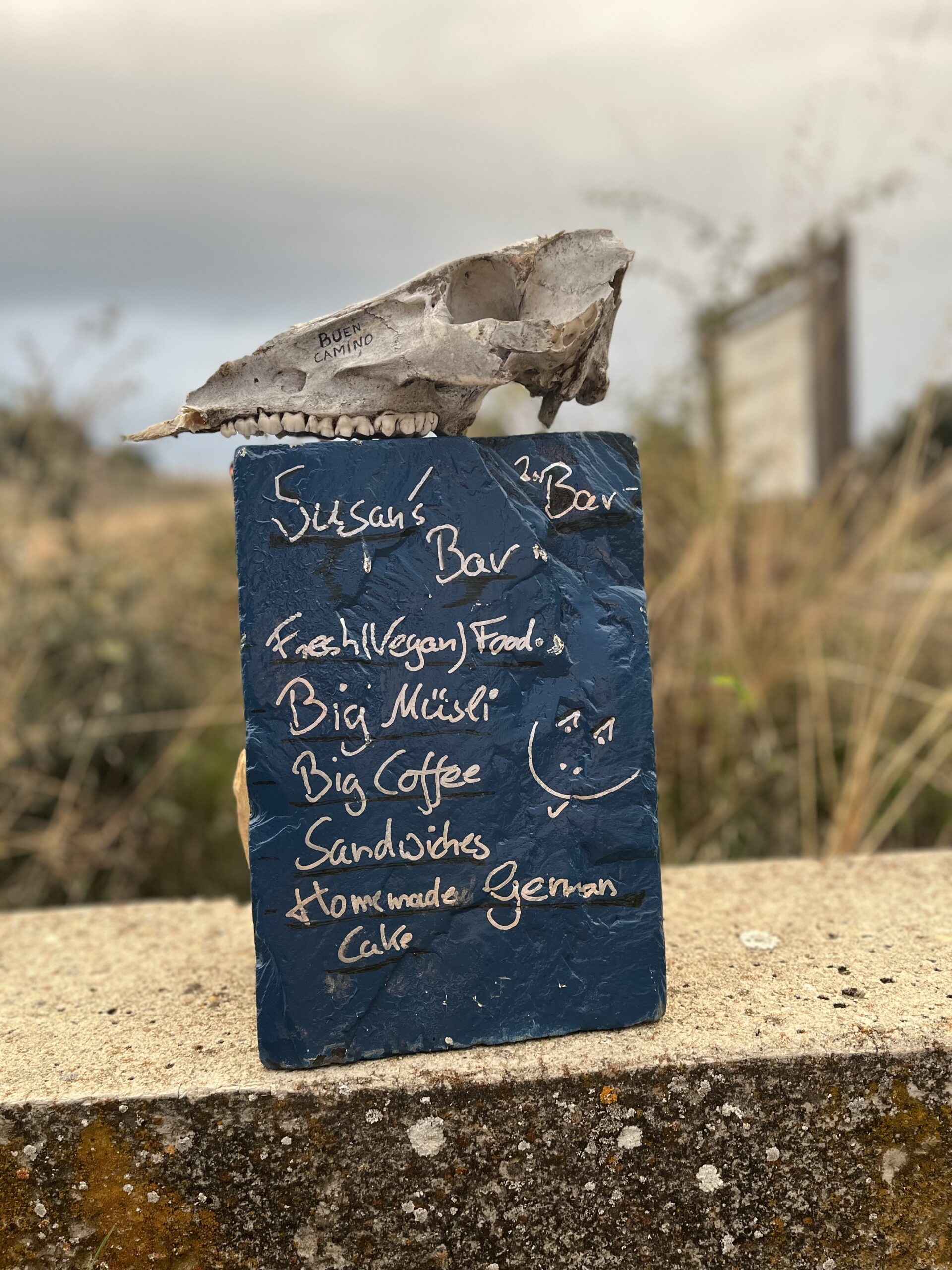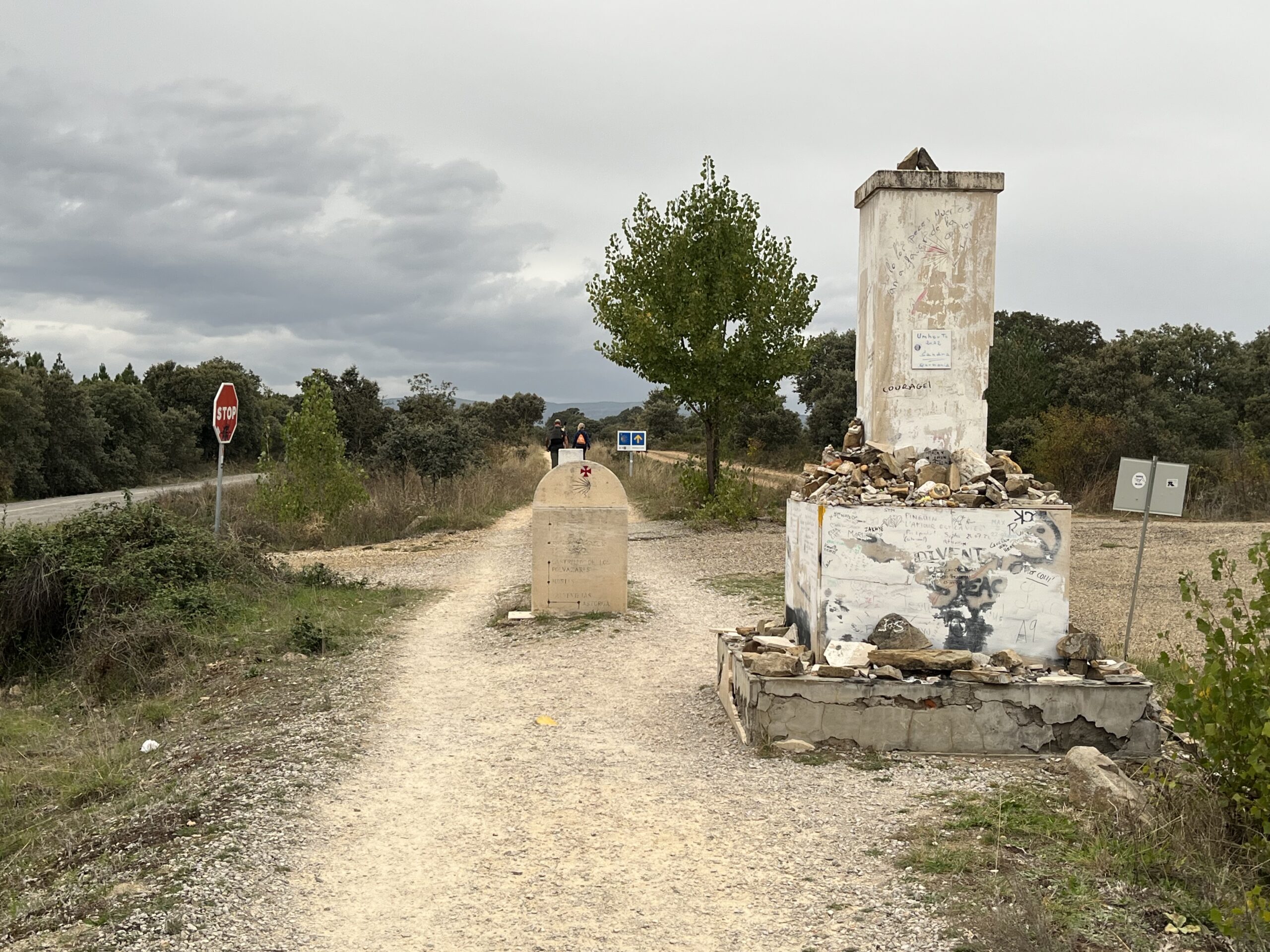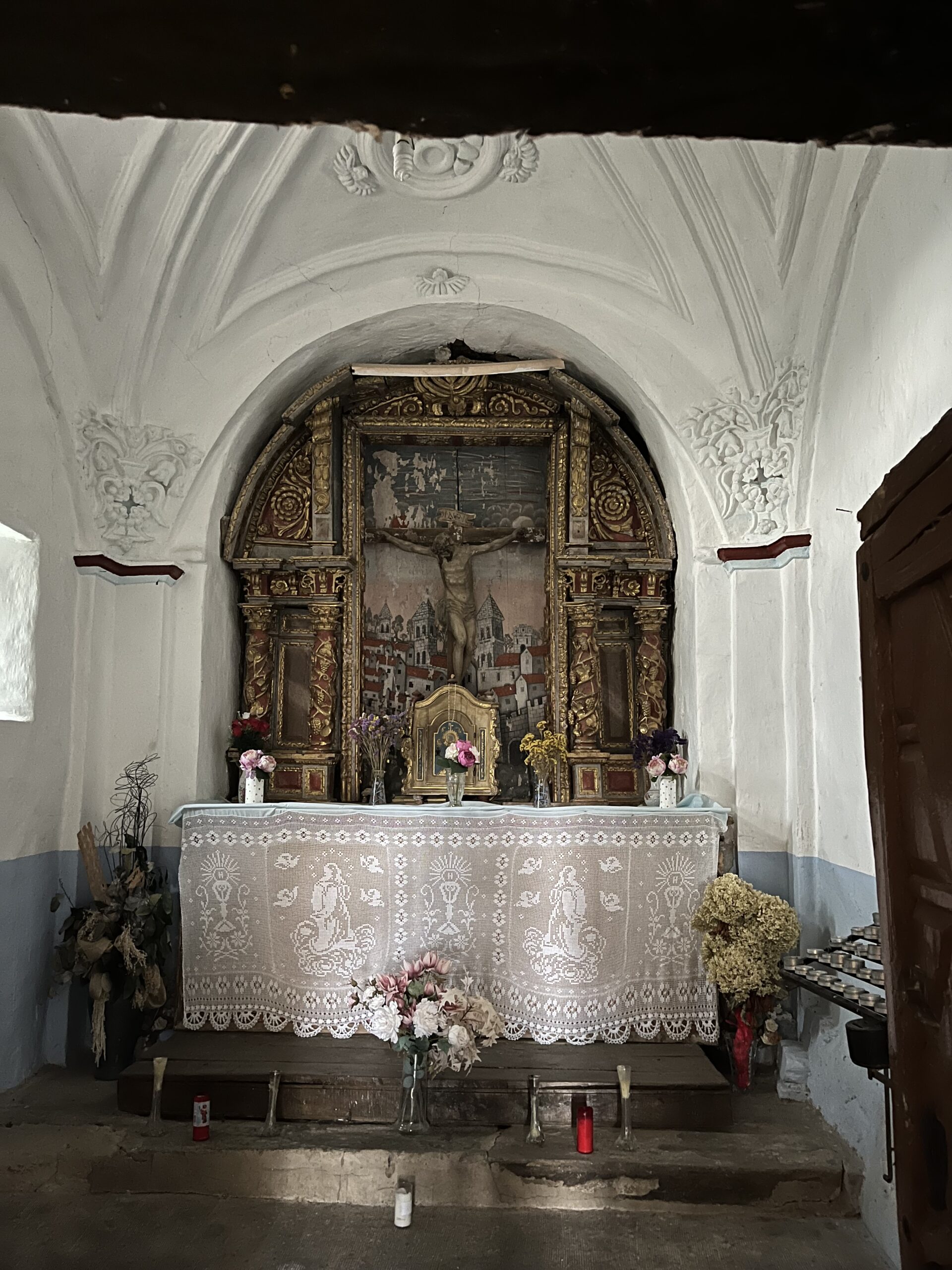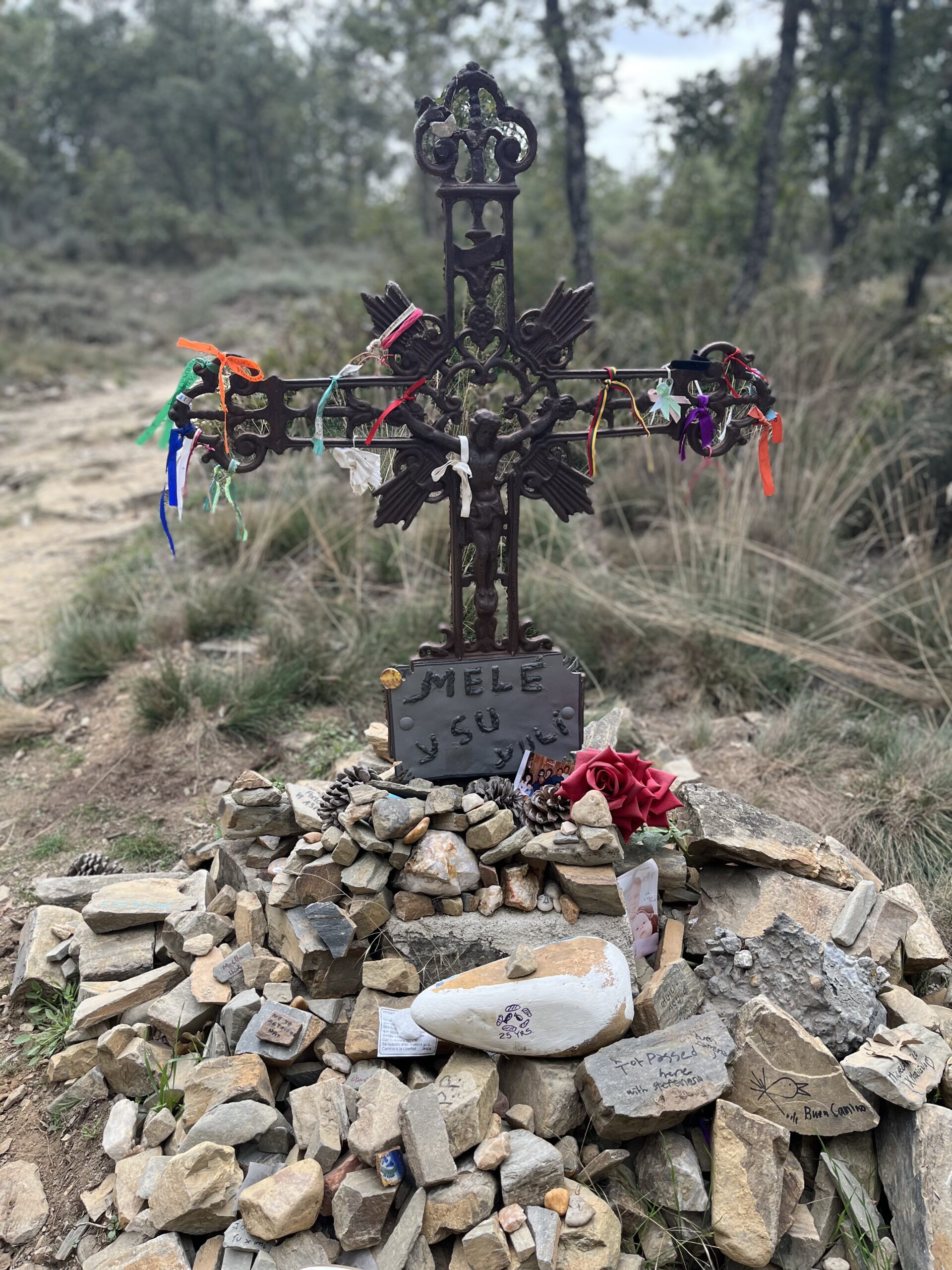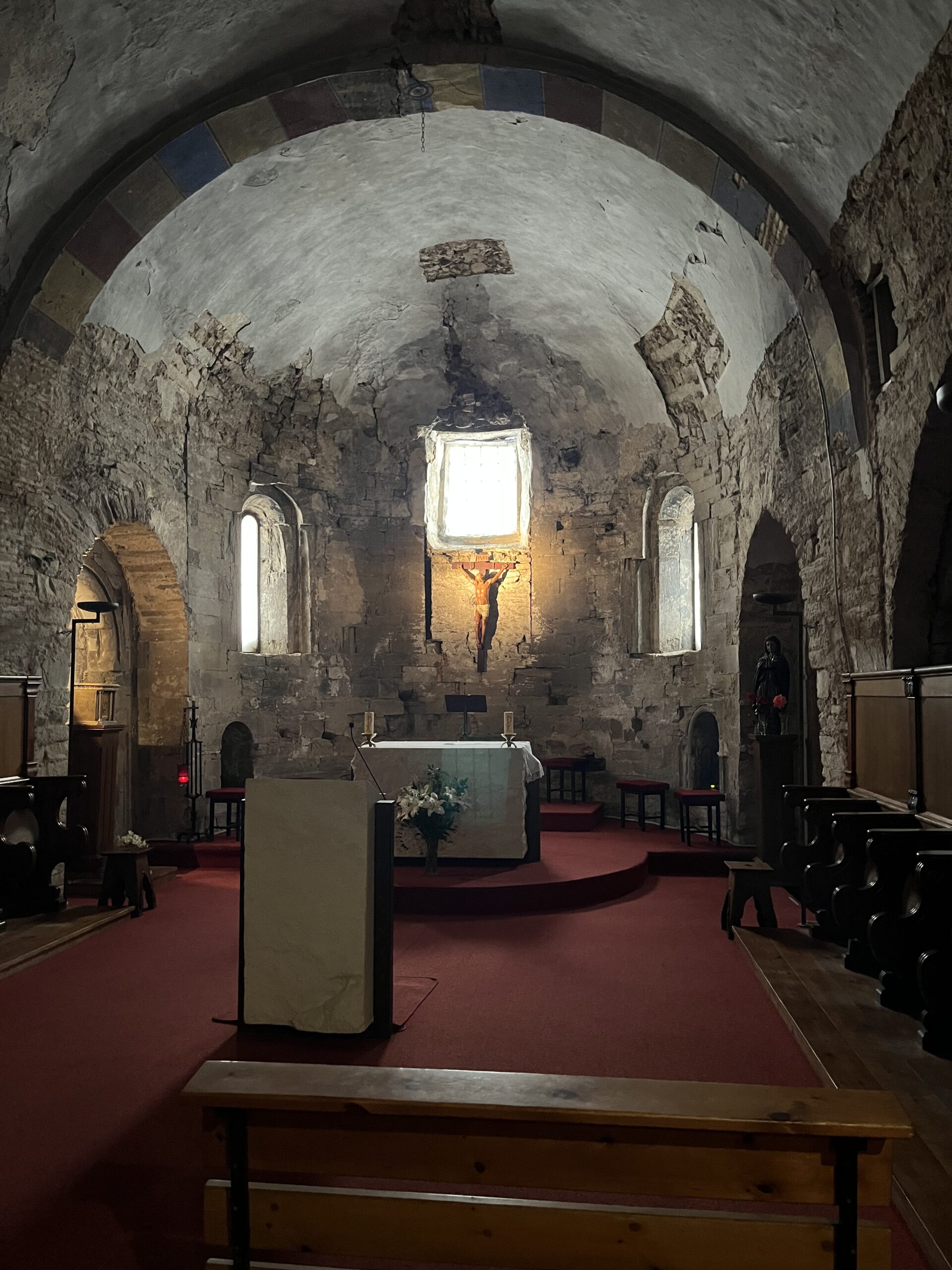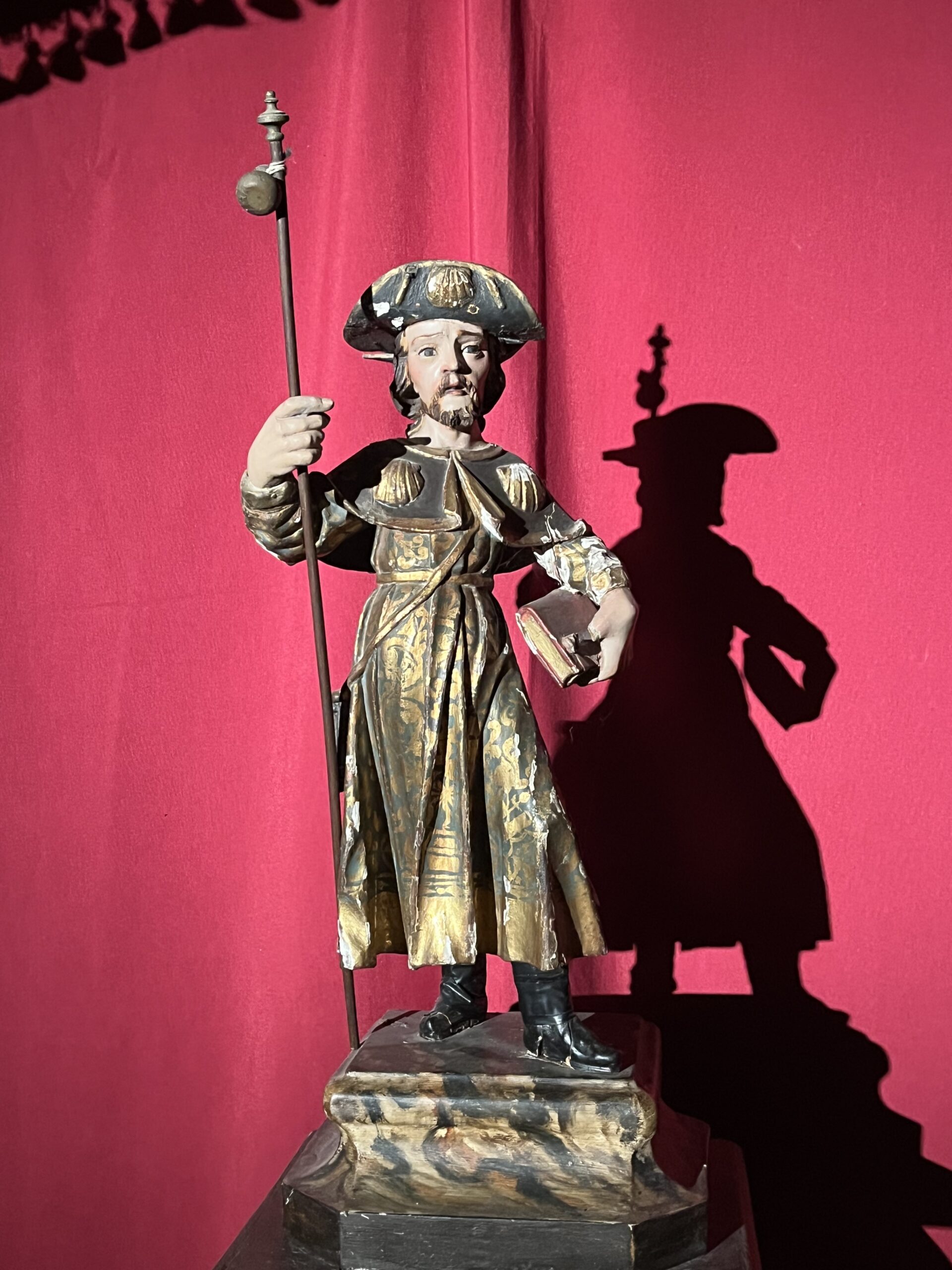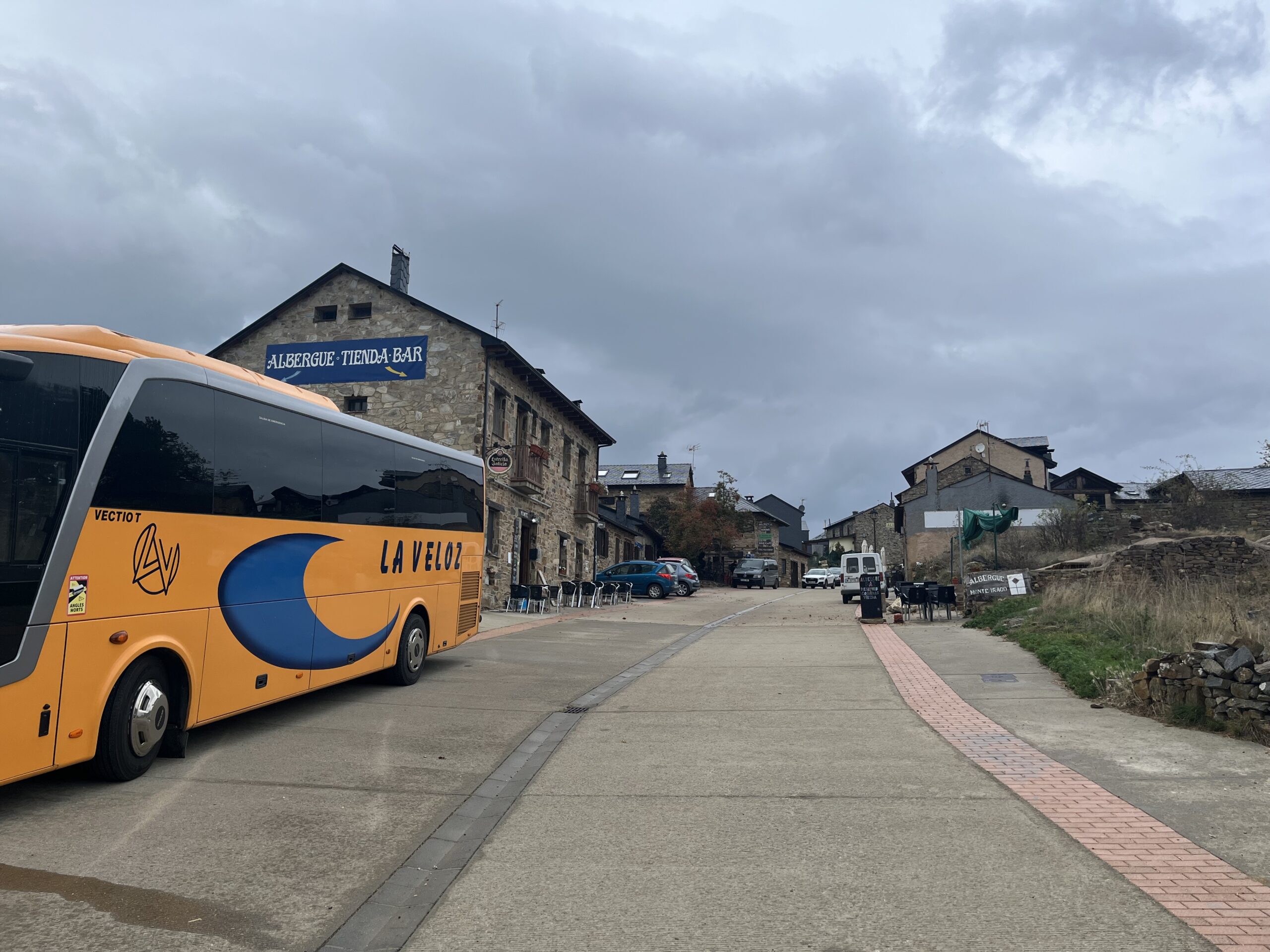Via Podiensis: Friday the 13th
On this day, 13 October in the year 1307, the Order of the Knights Templar was suppressed. That day was a Friday the 13th as well. The Templars loom large on the Camino, because for much of the 12th and 13th centuries they maintained a series of fortresses along the route to protect pilgrims from bandits, raiders, and the depredations of war.
Yesterday evening after my cathedral visit, I discovered to my surprise that the tiny little church next to the cathedral was open, so I went in. The church is dedicated to the patron saint of Astorga, a young fourth century martyr named Marta.
There are a surprising number of altars in this little church, but to me the most moving was that of the Sacred Heart of Jesus. Often times, statues associated with the Sacred Heart can be somewhat saccharine or kitschy, but not this one. It conveyed the strength and mercy of Jesus in a way that really touched my own heart.
I prayed for the intentions of the Camino and the intercession of Saint Marta.
This morning, I was packed by 6:30 AM, but due to the crush of pilgrims leaving the hostel, I didn’t get out for another 15 minutes in my quest for breakfast. Once I did get out, I couldn’t figure out where they all gone.
Until, that is, I started poking my head in cafés along the way. The crowding was crazy, so I decided I’d walk on and grab breakfast a village or two down the road.
The Camino proceeded through the city and eventually to a sleepy tree-lined avenue, which I followed the rest of the way out of town. It was still dark, of course, but the street lights were pretty good. It was a little odd, though, when I began to notice sheep grazing in the yards to my right.
Along the way, I passed by the little chapel Ecce Homo, and lo and behold it was open. A woman was mopping the floor, and she invited me in and stamped my credential. I prayed here for the intentions of the Camino. As I was leaving, a crowd of pilgrims entered behind me.
I was soon back on the road, which now passed over a highway bridge and then changed from sidewalk to gravel along the road and into the darkness.
The question of the day was that of today’s destination. From Astorga to the next city I wanted to visit, Ponferrada, was a two day walk, but where to split the days?
The two logical choices were the villages of Rabanal or Foncebadón. Going purely by distance and geography, the logical place to stop, and indeed the place I had planned on my spreadsheet, was Foncebadón. However, the arguments for Rabanal were considerable: the English Confraternity of Saint James maintains a great albergue there and a Benedictine priory there offers Vespers each evening.
In addition, I could get an earlier start there. Cruz de Ferro, which I really want to see in the daylight, is only 2 km past Foncebadón. That means if I started from there, I couldn’t leave until after 8 AM.
Against all that, it was hard to get past the geography. Starting tomorrow in Rabanal meant a 32 km day over and down a pass in the Irago Mountains.
I was mulling these things as I entered the little village of Murias de Rechivaldo at about 7:40 AM. The harsh yellow glow of the street lights meant I could put the flashlight away as I walked through. I soon found the village café and sat down to a café con leche and a croissant.
As I left the village, the overcast sky was beginning to lighten. An added complication in my calculations was rain. The forecast for the hills I would be going up into was about 50-50 for us having rain this afternoon.
The Camino left the village on smooth white gravel, flat and straight as far as the eye could see in the dim light. Off to the left was a dirt and stone road that in previous Caminos I had seen being used by everything from automobiles to horses. The landscape surrounding the paths was scrub land and trees.
The air was definitely colder now, and I put on my gloves. I took them off only as the sun rose behind me in spectacular fashion. There were groups of pilgrims, myself included, trying to take a photo of the beautiful dawn.
The Camino, meanwhile, was climbing up into the hills at a slow but steady rate.
I entered the village of Santa Catalina de Somoza just before nine. The village church was locked. This is a tiny village, but somehow it supports three alburgues and a couple of additional cafés.
I was hoping to meet up with my friend Becky here, but it didn’t happen. Nevertheless, I stopped for a second breakfast – a slice of homemade German apple pie and a cup of strong coffee at a place called Susanna. I had a great conversation with the proprietor, an ex-pat from Germany named Kai. Now there is a man who loves Spain.
I spent entirely too long there in conversation with him, but he did warn me that if it starts to rain to stop at Rabanal. Apparently, the ground can get slippery after that, and it’s not a great idea to walk that section if you are tired.
After the village, the Camino was a dirt and stone track alongside an asphalt road. It eventually became the familiar white gravel. I had put on my pack cover and rain jacket, as we’d had a few drops of rain while I was in the village.
After that, of course, it began to clear up.
At about 10:10 AM, I saw teepees ahead of me. As I got closer, I realized that they were just outside of a village. It turned out that they are part of a themed albergue.
The village proved to be El Ganso, and it seems to have exploded in population since I was here last. Seven years ago, there was nothing here but a church, a bunch of abandoned buildings, one albergue, and the famous Mesón Cowboy rest stop.
Things are definitely looking up for this place. While there are still some ruins here, there are many more restored buildings, and all of them look inhabited. I counted three albergues and at least two cafés.
I visited the village church, which was locked. There was a gate affording a view of a small chapel also in the building, so I prayed for the intentions of the Camino there.
I stopped for an orange juice and then continued. The clouds were still threatening rain, and I wanted to get my lunch and assess the rest of the day once I reached Rabanal, which was still another 7 km.
After the village, it was back to the gravel and up and down the rolling hills. if I’m honest, it was more up than down.
By about 11:05, I could see Rabanal on the hillside far in the distance, and I was starting to get little spits of rain again.
At about 11:20 AM, the Camino, which he been following next to a road for quite some time, veered off into the woods and became a rough, rocky sort of climb. It has been a long time indeed since I had encountered the dragon’s back!
Eventually, the path smoothed out and began running parallel to the road again, closer and closer, until I was on the shoulder, and then roadwalking.
I passed a herd of cows, the first I have seen in some days and no doubt the harbinger of things to come.
And so I came at last to Rabanal del Camino, a village that 40 years ago was an uninhabited ruin. Its fortunes were reversed by the revival of the Camino in the latter part of the 20th century.
The village was definitely bigger than I remember it, with even more alburgues and cafés. I hit the first one at about 11:45, before I was even properly in the village. The first church I came to was locked. As was the second.
I had better luck at the 12th century church of Santa María de la Asunción, which is currently part of the Benedictine monastery of San Salvador del Monte Irago. It is a simple structure, with a plain stone interior. In terms of furnishings, most everything is stone except the crucifix, the wooden choir stalls for the monks, and the pews for the people. I lit a candle at a little shrine to Santiago there and prayed for the intentions of the Camino.
Then I grabbed some lunch at a nearby bar and came to a decision. I would try to beat the storm into Foncebadón.
The road continued out of town, though it quickly degenerated into the familiar gravel. It returned to parallel the highway for a bit before crossing over and heading up into the hills.
Of the 6 km left in my day, probably less than one had elapsed before the wind and rain began. The rain wasn’t too bad, more of a sustained drizzle than anything. The wind on the other hand was not great. Why does it always have to be a headwind?
At about 1:20, as the rain was abating, I came upon a shelter. Rather than rest here, I followed the Camino uphill and into the woods. The path was uneven, full of sharp loose rock with the occasional pile of horse droppings just to keep you on your toes.
The Camino ducked in and out of the tree cover, but the essential nature of the path under my feet didn’t really change much.
This is about the time that a jogger sped past me, which truly put the whole thing in perspective.
I entered the village of Foncebadón at about 1:50. You could not imagine a place so different in just ten years. When I was first here, the vast majority of buildings were ruins. There are still a couple of picturesque ruins near the beginning of the village, but everything else has changed. For one thing, the road is paved. And so many albergues, bars, even restaurants and hotels. It more resembles Rabanal than it does its past self.
I checked into one of the albergues here, and even before I was in the shower, the storm I had been racing arrived. Mostly it was a strong wind rather than anything else, but wow did it howl.
Foncebadón was an important village once – there was even a Spanish Church council held here in the 10th century – but these days it doesn’t even have a parish church.
Date: 13 October 2023
Place: Foncebadón
Today started: Astorga
Today’s Photos!


